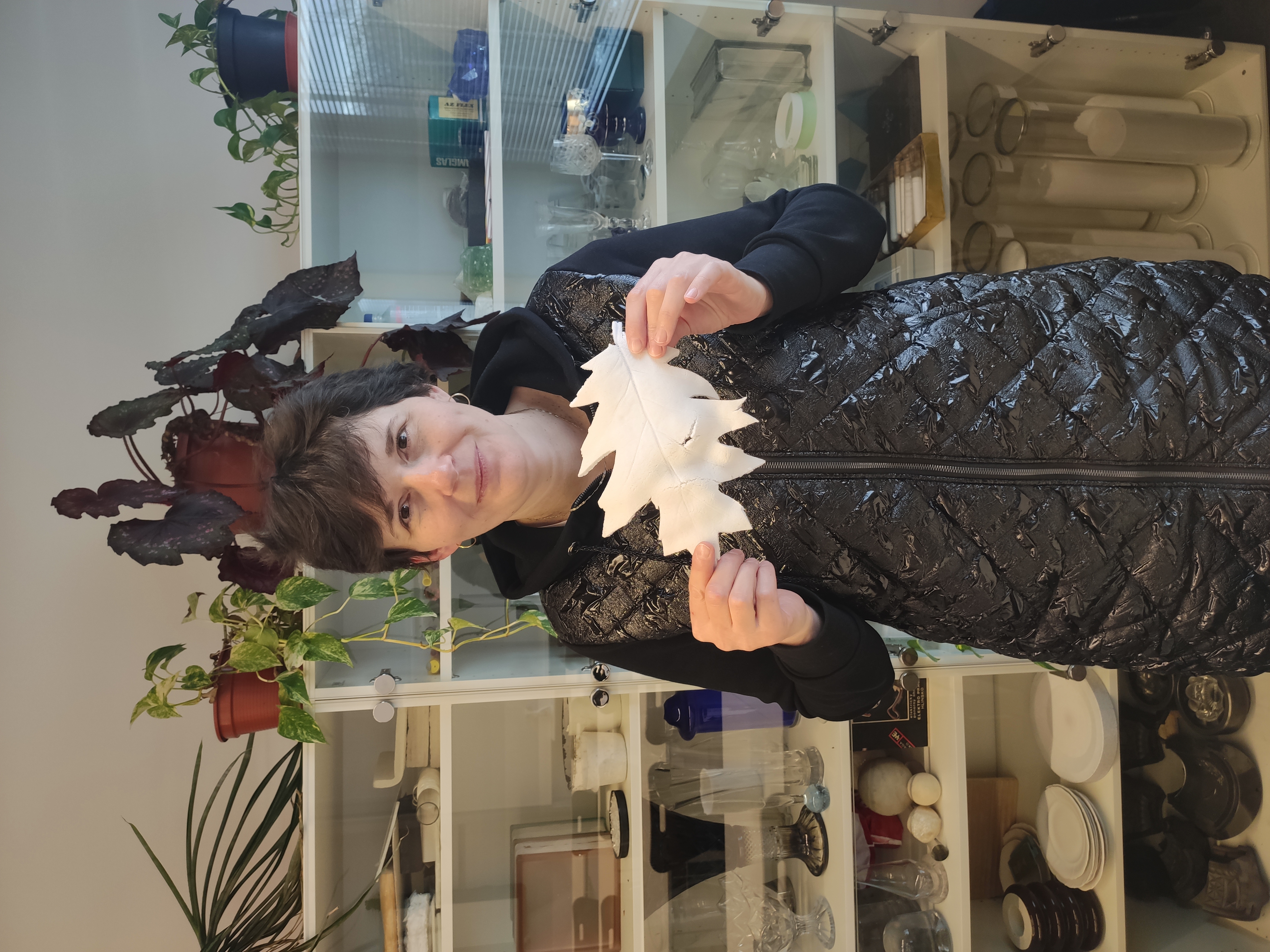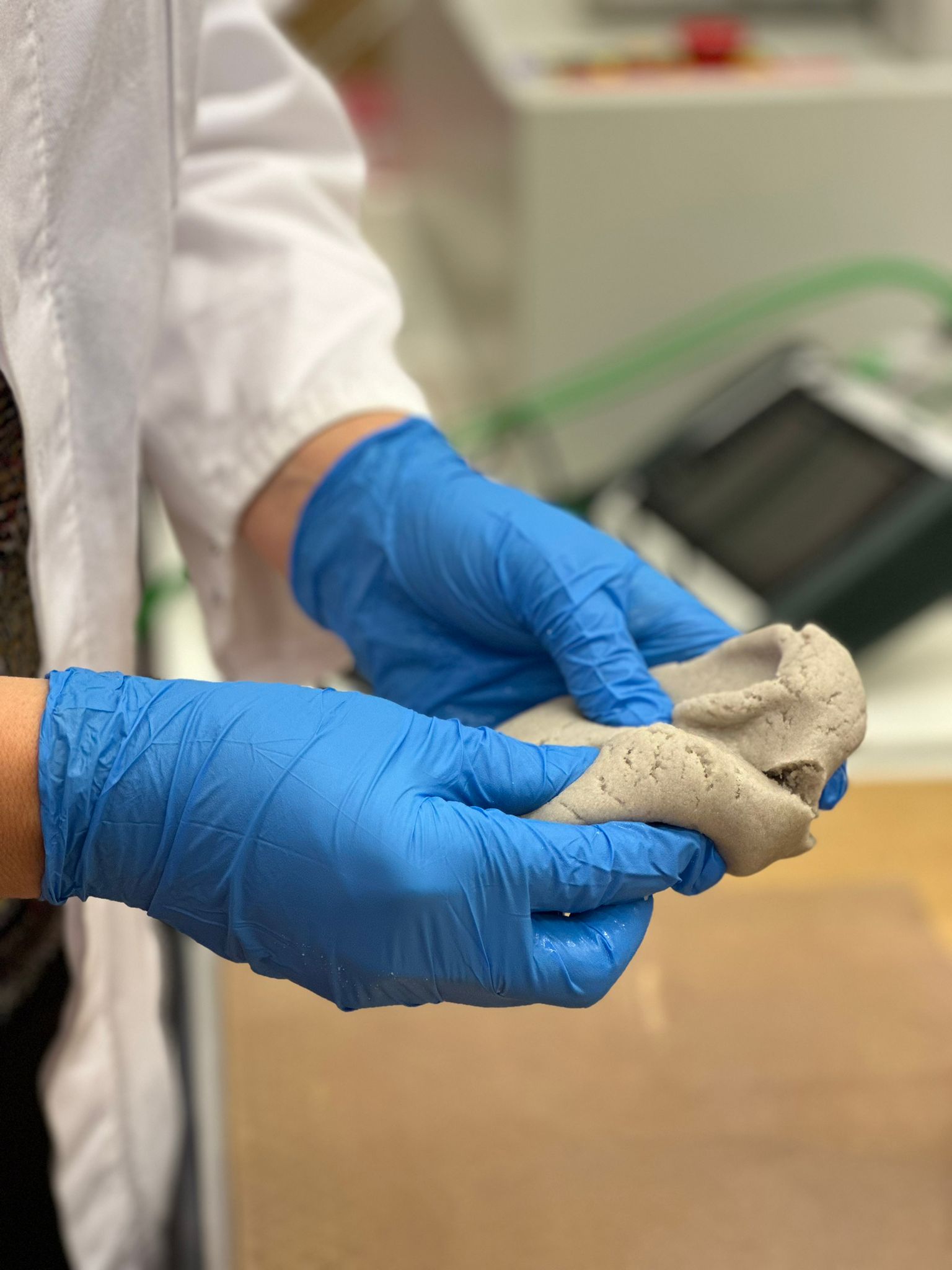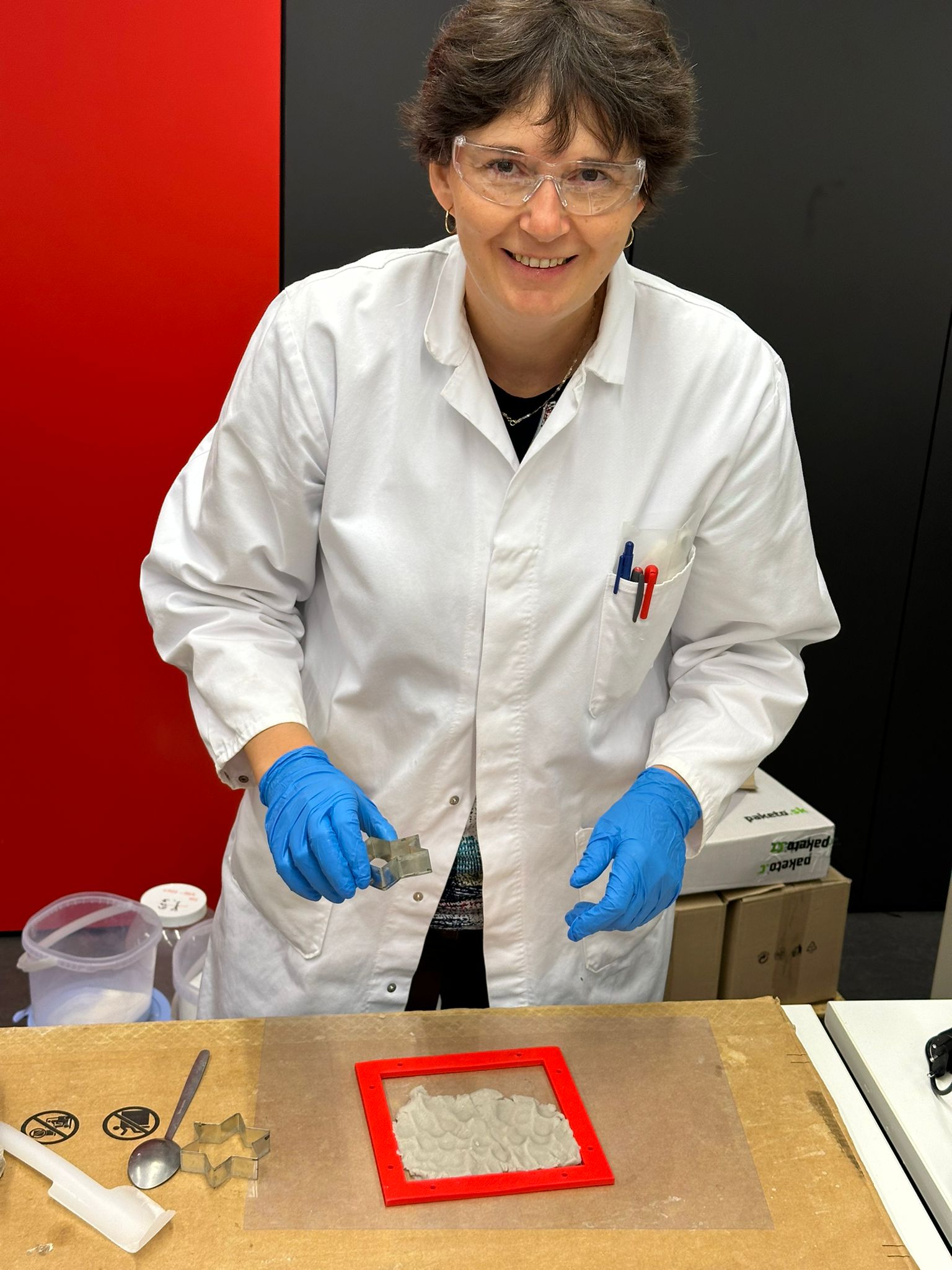Shards bring luck. Marie Stará breathed new life into waste
13. 11. 2024
She comes to work to play with glass plasticine. In fact, she already has several patents for different types of it, like for hydroponics or jewellery making. Marie Stará and the team from the Department of Glass Producing Machines and Robotics at the Technical University of Liberec are behind the discovery of how to give waste glass a chance that would otherwise end up in landfill.
I open the door to Marie Stara's office and I am greeted by Barney the Boston Terrier. "I brought him into my office when he was a puppy so he wouldn't be alone. Just for fourteen days. Well, it's been two years. He's our pet," explains Marie, whose office is full of glass specimens but has a homey feel.
Glass as a fateful heritage
Marie originally wanted to study nursing school, but she also liked to straighten screws with her dad as a child and was interested in technical things. In the end, she went to a technical high school and continued her studies at the Faculty of Mechanical Engineering of TUL. In her third year she decided to major in glassmaking and stayed at TUL. "I have to say that I was attracted to glass because my uncle painted on it and my grandfather worked in a glasswork in Desná. However, I didn't try painting or blowing glass. I am purely a technologist, but I think there is some genetic memory there," explains Marie that the path to glass was given to her perhaps before she was born.

The cold suits the glass
Marie describes herself as being quite cold emotionally. "Unless it involves my family, I can't empathize with other people's feelings. It's actually lucky I didn't become a nurse. My husband laughs at me that my care would often be impossible for patients to handle. Glass is also cold, and I have gotten comfortable with this material," adds Marie, who teaches at TUL.
The students certainly don't feel the chill from her, as she is one of their favourite teachers. She even received an award from the rector for outstanding teaching achievement. She enjoys teaching, but it has to be within a tolerable level. "I want to engage the students first and foremost. I don't give them technical explanations; I use common sense and show them a lot of things. I simply don't want to have a theoretical exercise."
Plasticine was created by accident
The story of the glass plasticine called Glassticine began by accident. "Over and over again, we've treated silica sand with a laser to make it melt. We couldn't keep the sand in shape, it was a disaster. Then I put the sand in a mould in the oven and it turned into this white plasticine. I wanted to throw it in the trash because we wanted a transparent product. But the boss liked it and started to test what properties the material had," recalls Marie, who also collaborated with the Institute of Nanomaterials, Advanced Technologies and Innovations at TUL.
Each variant of plasticine has its own charm
The glass plasticine is made of silica sand or glass recyclate. "We use sand because it has a snow-white colour after firing and it is still the same. However, with recyclate, I enjoy the fact that we create a new use for the waste product, even though each piece is unique," Marie explains.
Plasticine can have different properties depending on what other additives are added. "It's not that you mix everything together and burn it. It needs a certain process. We've managed to do that and we've also worked out the optimum additive ratios for the desired properties." explains Marie, who works in the department with her husband. "Until a few years ago, we also shared an office. It's good, we have a common interest. We have been together since our student days and I was the one who brought us both to the Department of Glass Machinery."

The future is in space
The final material is non-toxic and porous, very absorbent. This characteristic makes it suitable for hydroponics, for example, and maybe one day plants will be grown on it in space. The material is reusable and at the end of its life cycle the product can be put into a glass bottle container. Finally, the glass can be scented so that the scent is released gradually. In this way, jewellery can be produced that also smells. "I have no sense of aesthetics at all. A student from the Faculty of Textile Engineering created it for us," explains Marie, who clearly answers no to the question of whether she wears plasticine jewellery. "I don't wear any jewellery, but it's a great idea and I like it."
Nobody wants this glass. Except for Marie.
Marie was given the opportunity to lecture at AMIA. This association brings science to industry while enabling scientists to listen to the needs of industrial partners. The aim is to provide a basis for collaboration on specific technical problems of individual companies. AMIA also organises technical workshops where Marie presents the results of her research. "After my lecture, I was contacted by Miroslav Ležák from Praktik system s.r.o. Their company deals with the recycling of electrical appliances. They also recycle washing machines and these have doors with glass panels. That's a problem because it's borosilicate glass, and you can't just throw that in the collection. By the way, not a lot of people address this, but the glass recycling bins don't include simax glass, like baking dishes or medicine bottles. It raises the melting point of the final product, and therefore the price, and is accordingly not suitable for recycling. No one wants this glass and neither did I, at first. But thanks to AMIA's financial support, I was able to do analyses and found that there is not so much borosilicate impurity. So, we ended up working with this glass. And we got a nice product out of it."
Closer to the market
Because plasticine has become popular, a few months ago scientists decided to start a spin-off at TUL called Glassiteca. "I was involved in the birth of plasticine, I'm on patents. I didn't go directly into the spin off because my husband is there. That would be a family business," laughs Marie. "My colleagues had to take the plunge. There's a lot of potential for commercialisation. They wanted to move away from the university environment a bit and be more flexible and faster. There are now two strands to the company, scented jewellery and hydroponics on glass plasticine. We are currently testing hydroponics trays for ForrestBit, a hydroponics company. They are also growing lettuce on the roof of TUL with this technology," concludes Marie, who plans to stay at TUL.





.png)
.jpeg)
.png)
.jpeg)
.png)
.jpeg)
.png)


.png)